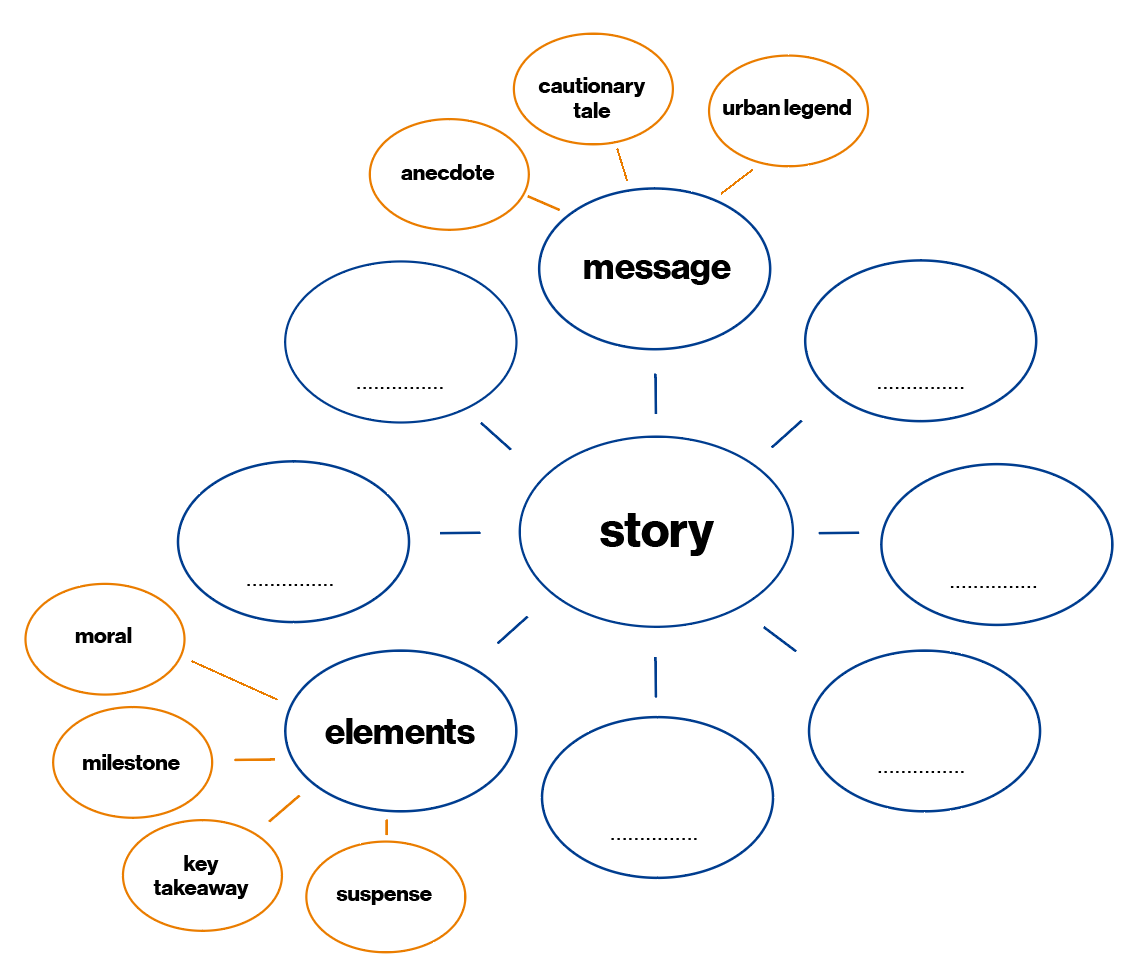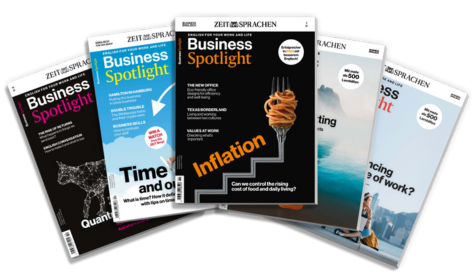if appropriategegebenenfallsOur brain lights up when we hear a good story. And, intriguinglyinteressanterweiseintriguingly, neuroscientists at Princeton University in the US have discovered that the same areas of the brain light up at the same time in both the listener and the storyteller. Therefore through storytelling, one can create a bondBindung, Beziehungbond between people — even, it seems, when the listener is stuck inside a scanner. It’s a clear sign that storytelling is an important social glueKleber, Bindemittelglue.
Before scanners came into the picture, good storytellers already knew that a great story could to trigger sth.etw. auslösentrigger emotions in others and move people to tears. While you might not want the tears in a business context, a captivatingfesselndcaptivating story can bring other benefits. It can sell ideas, products and services. It can help you get a job or inspire others to act. Stories are persuasiveüberzeugendpersuasive tools. In these seven tips, we look at storytelling techniques and the language you can use in your own.
1. Opening for your audience
Here’s a Here’s a spoiler; spoileretwa: hier wird schon mal etwas verraten; Spielverderber(in)spoiler: focus on the ending of your story before you get started. First, imagine how you want your audienceZuhörer(innen)audience to feel once your story is over. Then draft sth.etw. entwerfen, konzipierendraft your story with that goalZiel(setzung)goal in mind. This will be much easier if you know your audience. Who are they? What do they know already? What do they need to know? How do you want them to react? You’ll get the best reaction if you have their full attention while you’re telling your story. So, make sure you put them into to put sb. into listening modedafür sorgen, dass jmd. aufmerksam zuhörtlistening mode from the beginning. Where possible, use their names to to grab sb.’s attentionjmds. Aufmerksamkeit erregengrab their attention. Now, can you open in a way that creates a sense of intrigueIntrige; hier: Spannungintrigue?
2. Organizing the elements
Consider this three-question structure for your narrative frameworkErzählrahmennarrative framework: “What?”, “So what?”, “Now what?”. This should help you create a strong beginning, an interesting middle and an informative end. Don’t forget to include the key elements of a good story: a plotHandlungplot, a conflict or struggle, a turning pointWendepunktturning point and an outcomeErgebnis, Ausgangoutcome. Structure your narrative, and then guide your audience through the story.
3. Setting the scene
Bear in mind that your audience could be thinking, “Why should I care?”. Give them context so they do. Before you get too deep into the story, make it easier for people to understand your motives. Try to set the scene with interesting details. Remarkably, starting a sentence with a strong adverb can make people pay more attention to what follows.
4. Timing it well
While it’s important to be descriptive, cut out any unnecessary background information. Consider asking a good editorLektor(in)editor for help. If you feel your audience getting restlessunruhigrestless while you’re telling your story, let them know you’re about to to wind sth. upetw. zu (einem) Ende bringenwind up the story. That prospect might draw them back in.
5. Making it relatable
All stories need a strong central character — a hero. In the business world, it doesn’t need to be a person. It could be your brandMarkebrand or a product. Explain who or what is involved in a way that interests the listener to make your story relatablenachvollziehbarrelatable. You want your audience to feel empathy with your heroes. If your hero is a person, explain how they are feeling and why. This helps your audience feel a connection — and helps them to put oneself in someone else’s shoessich in jmd. anderen hineinversetzenput themselves in the hero’s shoes. So does interacting with your audience as you tell them your story.
6. Introducing conflict
Introduce events, decisions or conflicts that to highlight sth.etw. hervorhebenhighlight your values or those of your company. Just make sure that the struggle is about something that your audience recognizes and is interested in. Build and then to release sth.etw. freisetzen; hier: wieder abbauenrelease tensionSpannungtension. A story with tension will to capture sb.’s attentionjmds. Aufmerksamkeit erregen, jmdn. fesselncapture people’s attention.
7. Getting to the numbers
Focus on the significance of your data, and not just on the numbers. Creating stories around data helps people accept and
remember them more easily. The key is not to to overloadsth.etw. überfrachtenoverload your story with statistics. Concentrate on the ones that matter — and provide the rest in a document, if appropriate. In business, you can’t ignore the data, but you really shouldn’t to neglect sth.etw. vernachlässigenneglect the story.
Essential phrases
1. Opening for your audience
- Did I ever tell you about the time I… ?
- Let me tell you why this is important/ hugehier: großartig, tollhuge/ amazingfantastischamazing.
- This is a true story, by the way.
2. Organizing the elements
- Initially,... / To begin with,... / at the outsetanfangsAt the outset,...
- So, first of all... /Second,... /Lastly,...
- Firstly,... / Secondly,... / Thirdly,... / And finally,...
3. Setting the scene
- Honestly,... / Truthfully,... / Basically,...
- intriguinglyinteressanterweiseIntriguingly,... / Remarkably,... / Ironically,...
- Sadly,... / Tragically,... / Worryingly,... / Strangely enough,...
4. Timing it well
- I don’t want to bore you with all the details.
- To to cut a long story shortlanger Rede kurzer Sinncut a long story short,…
- I’ll just tell you this…
5. Making it relatable
- Sarah is the kind of person who...
- You know what I mean, don’t you?
- We’ve all had that experience, right?
6. Introducing conflict
- The problem was... / The key obstacleHindernis, Hürdeobstacle remained...
- It just so happened that…
- Unfortunately,... / Unbelievably,... / incrediblyunglaublicherweiseIncredibly,...
7. Getting to the numbers
- The impactAuswirkung(en)impact has been devastatingkatastrophaldevastating/
- significant/encouraging.
- What we were seeing was...
- What does this mean for... ?
Build your vocabulary!
How can you best prepare your storytelling? Start a mind mapMindmap, Gedanken(land)kartemind map of the different elements in a story and add the vocabulary that you will need. Write down expressions you can use to tell your story.

Neugierig auf mehr?
Dann nutzen Sie die Möglichkeit und stellen Sie sich Ihr optimales Abo ganz nach Ihren Wünschen zusammen.



